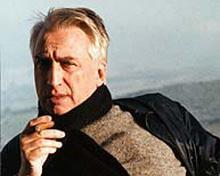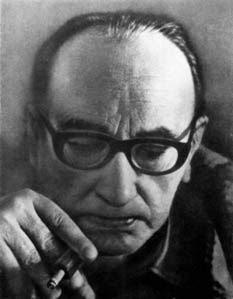As a famous writer and philosopher, Roland Barthes is also a genius critic and thinker. Barthes is a versatile person, his ideas touched upon a wide range of fields, it’s hard to classify his categories according to the styles of his works. I’d like to talk about my impressions of several arguments of Barthes after reading 《Image Music Text》 and《Mythologies》.
In 《The Death of the Author》, Barthes mentioned that language reigns the work instead of author, language itself is the origin. As a general rule, we take the work as a “product” of the author, because the author turns his/her view into the language to narrate the story, the work should be connected with author’s biography, life and passions, all is connected to the author. Nevertheless, Barthes believed writer’s interiority is less important, the relation between writer and work should be diluted, the modern scriptor is born simultaneously with the text, is not the subject with the book as predicate. Writer can only imitate a gesture that is always anterior, never original (P7). To give a text an Author is to impose a limit on that text, to furnish it with a final signified, to close the writing (P8). And Barthes took one instance—in Surrealism, language desacralizes author’s image. Reader is the destination of a text’s unity which gives writing its future.
In 《From Work to Text》, Barthes summed up the characters of text and the differences between Text and Work, the fifth point of the arguments concerns the importance of writer. Work has to be finished in conformity with the author’s intentions, but the Text is a result of a combinatory systematic, it can be broken and read without the guarantee of the author.
Actually, I’ve been interest in the connection between author and literary works for a long while, but I have an intimate knowledge of the significance of language on literary works in this post-structuralist work of Barthes.
In addition, through the study of several articles in 《Mythologies》, I found Barthes is really talented and creative. He decomposed daily life problems and analysed the essence and connotations with an original view. Those specific problems or cultural materials, which seem very common and regular, could be cut apart to two parts–positive one and negative one— from different points of view. In 《The Romans in Films》, fringes and sweat were designed to express emotional sentiments, but Barthes took it as the most benign symptom, it’s ambiguous, shallow, intermediate and degraded, it’s a kind of sarcasm to regard itself as “nature”; in 《Toys》, Barthes thought toys are socialized, as a microcosm of adult world, they prepare the children to accept adult opinions instead of their own consciousness of inventing other original things, besides, artificial materials of toys instead of wood makes children far from the nature, Barthes thought this phenomenon is pathetic; in 《Soap-powders and Detergents》, through the comparison between the quality and nature of two objects, it turned out they are abrasive, people are always conceived by their own imagination; in 《The Blue Guide》 , Barthes thought it’s just a tool of keeping images of graceless landscapes and inane phrases without the bliss and significance of travel, it turns travel into a method of senseless approach instead of an art or a culture; in 《The Brain of Einstein》, from a different viewpoint, Barthes took Einstein’s death as the condition of myth in the universe signifying Einstein is still the most sublime representation of the human being. Barthes amplified the problem with a lively description and explicated its dual character as his critique, and he exposed how bourgeois values and motivations were asserted through those materials.




